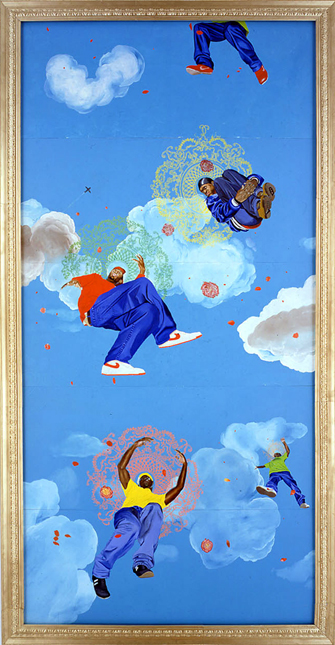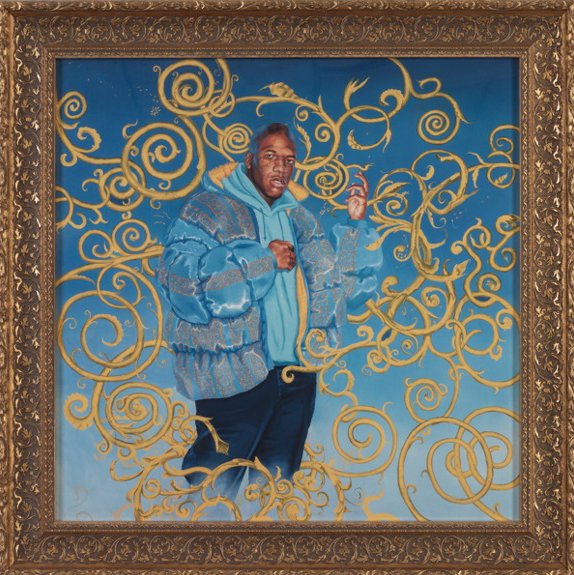Kehinde Wiley - November 23 2002 – January 15, 2003
Real Art Ways, Hartford
Kehinde Wiley’s first solo exhibition.
Wall Text:
In this, the first exhibition in the newly opened Real Room, Kehinde Wiley’s work inaugurates not just a new exhibition space here at Real Art Ways, but introduces a smart decoupage of art historical homage with winks to hip-hop.
In Passing/Posing Number 1, for instance, Wiley walked along 125th Street in Harlem with a reproduction of a Titian painting, asking passing men to strike the pose of a figure in the painting. Wiley snapped a Polaroid of the gesture, and paid the man twenty dollars. An innocent walk down the street is never without a certain degree of self-consciousness, a certain posturing, be it the swagger of young men down 125th Street, or the peacocking of courtiers at Versailles. The filigree backdrops to these images decorate what? It sets the subject in a kind of frame, but the Baroque reference seems to also suggest that there is a baroque-ness to hip-hop. Each is, or was, excessive, highly ornamented, multi-layered, extensively sampled, intricate, powerful, confident, expansive, paradoxical, complex. In Passing/Posing Number 5, the filigree is composed of individually rendered gold sperm adding potency and fertility to Wiley’s admixture of times, places and cultures.
In Conspicuous Fraud (2001), Wiley’s subject has hair that piles into a cloud above his head, but could just as easily reference sixteenth or seventeenth century portraits of big-wigged English nobility. Either way, in hip-hop or Restoration England, hair has something to do with power. In Easter Realness, the floating, swirling men in their Easter suits led one critic to suggest the figures of Marc Chagall. I can see the comparison on one level, but I also feel that, unlike Chagall’s, Wiley’s figures float and twirl with uncertainty. Like other figures in Wiley’s paintings, they seem lost, caught up in something they don’t understand but nevertheless accept. Their expressions of awkward uncovering linger in my mind long after leaving these paintings, their expressions of uncertainty and insecurity betraying the bravura and the Baroque of masculine posturing.


